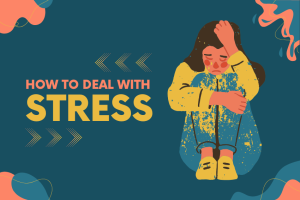While having a strong internet presence is important, it’s impossible to achieve if your website fails to be user-friendly. 88% of Americans report having negative feelings towards a brand or business due to their website’s poor performance. Optimizing your website’s user-friendly features is one of the best ways to ensure an engaged and eager to return audience, which can be directly reflected in your business’s bottom line.
According to BANG!, a Phoenix website design agency, in order to make your website user-friendly, you need to be aware of what plagues a poorly performing website. Below we’ve put together 5 ways you can address some of these issues and help make your website more user-friendly.
Improve Your Navigation
Users come to websites seeking specific information. They want to get to your landing site or homepage and be able to navigate your website’s layout quickly and efficiently. People are also looking for this information in a timely manner.
See if you can design your website so it’s inviting to users while also offering them an easy way to glance over your information to find what they’re looking for. Use bullets and subtitles, hyperlinks, and properly titled tabs on your search bar.
Make sure your landing page has the proper search bars and tabs. Your tabs should be labeled cohesively and highlight the most important information users would come to your site to see. For example, if you are creating a website for your restaurant, you’re going to want your menu as a tab on your browser’s homepage because of the importance it holds to users’ needs when visiting your site.
People are also looking for this information in a timely manner. See if you can design your website so it’s inviting to users while also offering them an easy way to glance over your information to find what they’re looking for. Use bullets and subtitles, hyperlinks, and properly titled tabs on your search bar.
Ensure Your Site Is Compatible With Mobile Browsers
This may seem like a no-brainer, but website creators either forget to check the compatibility of their website on mobile browsers when they’re finished building it out or choose not to modify their site for mobile browsers at all. Fifty-seven percent of users will not recommend a business to friends or family if the website is incompatible with their mobile browser.
Optimize Your Site’s Color Choices
Make sure to pick colors for your website that are representative of your brand and identity, but are also inviting, warm, and create a cohesive space. Too much color may be off-putting to viewers. Make sure all your font coloring is clear and visible on the background of whatever color palette you decide is best for your site.
When given 15 minutes to view content, 66% of users said they preferred looking at beautifully designed websites. It’s worth investing in a proper color scheme for your site to help make an immersive experience.
Check Your Loading Speed
How fast your website loads is a defining factor in keeping browsers interested. According to web design experts, it should take about three to four seconds for your website to load, any longer and users may refresh the page or go back to other options out of frustration. Experts say that websites with slow loading speed lose a collective $2.6 billion in revenue each year.
There are a few ways to optimize your website’s loading speed. If you have images, plug-ins, or add-ons, check their sizes and demand on your site. They may be contributing to your slow speed. Another way to increase your loading speed time is to increase the bandwidth of your website.
Lastly, check with whatever web host you’ve chosen to host your site on. Sometimes it may be an internal error on their end, and unfortunately, it may be something they can’t fix.
If that’s the case, you may want to look into moving your site onto a different, faster web host. A UI UX design agency can assist in evaluating these technical aspects and recommending suitable solutions.
Pay Attention To Your Contact Us Page
Roughly 51% of internet users believe contact us pages lack the proper information needed to reach businesses. Make sure your contact page is more than just your email. Think about inserting a contact us box, where users can write and send messages straight to your business while on your website.
If you have a brick and mortar, make sure your location is listed and add a hyperlink for google maps. The contact us page is a great way to ensure you have an open line of communication with your users. They may even give you valuable feedback that you can use to better your website’s layout.


